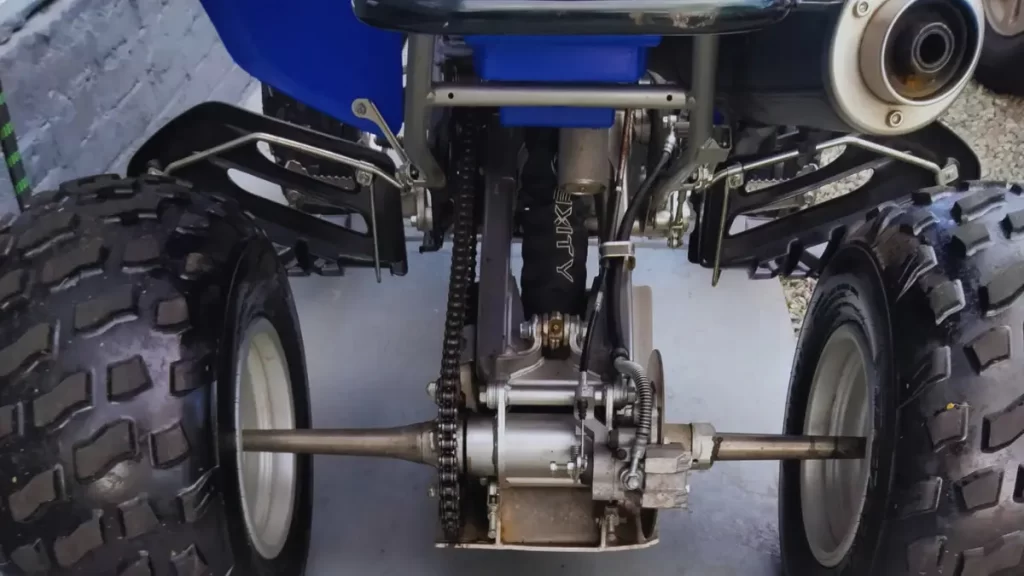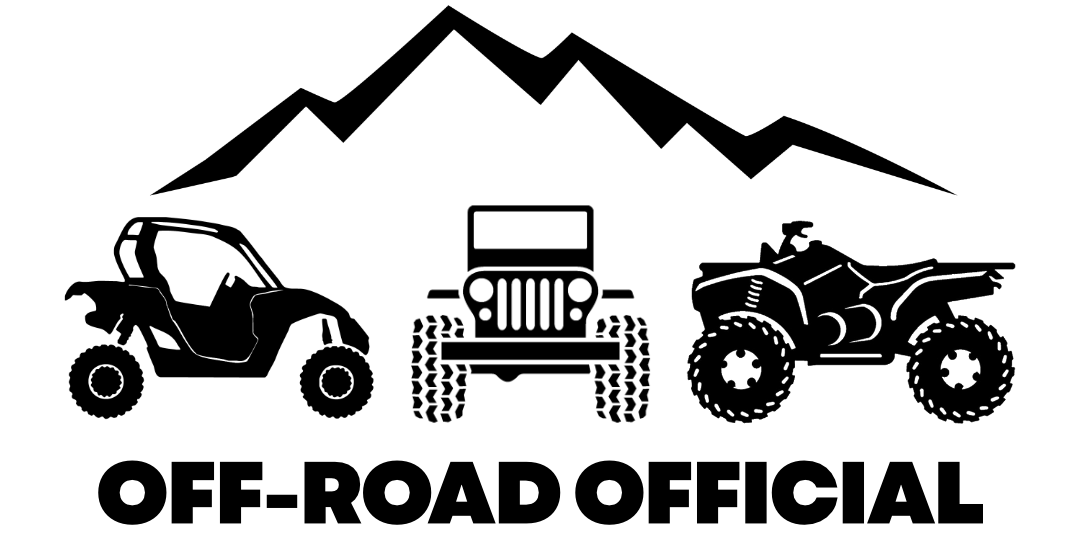The Yamaha Raptor 350 was a sporty 4×4 ATV produced from 2004 to 2013, and made for one of the best ATVs for the money at the time.
It was one of the most popular sport ATV models in its class during its ten-year production run, until it was eventually discontinued as the newest Raptor at the time grew in popularity.
While it offered a number of qualities that made it attractive to outdoor enthusiasts, the fact that this model can absolutely haul put it atop the list for many riders with a need for speed.
So just how fast is a Raptor 350?
And what are some of the main considerations if in the market to buy one?
This guide will answer those questions and detail the following:
- About the Raptor 350
- Raptor 350 top speed
- Stock vs modified top speed
- Specs and key features
- Performance
- Strengths and weaknesses with the model
- Best Raptor 350-specific mods to make it 10-20 mph faster
About The Raptor 350
The Raptor 350 was one of the few ATV models to wade into the sport-rec “hybrid” waters in the 2000’s, with their only real competition at the time being the Honda 300EX and Honda 400EX.
More well-rounded than pure sport quads, their lightweight builds make them incredibly easy to handle and offer excellent ability on both the track and trails.
As compact, less powerful models they appealed to many smaller or less-experienced riders while at the same time offering the overall performance to give seasoned owners the ability to ride aggressively.
They feature an appealing, sporty appearance with a build style modeled after two of Yamaha’s most popular models at the time, the Raptor 660 and the YFZ 450.
And they were some of the fastest models in their class, still holding their own years later.

Raptor 350 Top Speed
Boasting a 349cc single-cylinder engine with a power output of around 22 HP, the Raptor 350 top speed is around 60 to 62 mph for a model still in fully stock condition.
This doesn’t quite land the Raptor 350 on the list of fastest ATVs, but its about as fast as you’ll find at the 350cc level and makes for one of the best racing quads in its class.
Those who make modifications to their Raptor to increase the torque and horsepower may see their top speed increase to between 70 and 80 mph, fast enough to keep up with some of the sportier Yamaha ATVs.
There are five highly recommended modifications to get you there, which will be explored after taking a deeper look into the Raptor 350 itself.
Specs, Key Features & Performance
Engine & Drivetrain
Powered by a 349 cc single cylinder engine with a max power output of around 22 HP, the Raptor 350 offers sufficient torque and power for quick starts off the line and climbing longer hills at speed.
And its big 36 mm carburetor really enables the engine to breathe, translating to good low end torque and excellent throttle response.
Together, the engine and carb offer plenty of acceleration, speed, and power for those who like to ride aggressively.
Though the 36 mm carburetor holds some advantages over EFI models, it does lead to the Raptor 350 exhibiting some cold-blooded tendencies and needing to warm up for a short while before running without hesitation with the choke off.
Be sure and cover your Raptor 350 and other carbureted models to prevent dust from accumulating in your carb, jets, and engine and prolong these components’ lives.
The Raptor 350 is powered by a chain drive, which being a 2WD model sends power solely to the rear wheels.
It also features a 6-speed manual transmission, with an easy-to-use choke lever located on the handlebar for changing gears.
A big plus of this model is that it also features a Reverse gear that can be activated while in any gear, which comes in clutch while trail riding.
| Engine Type | 4 Stroke, forward-inclined SOHC |
| Cylinder Arrangement | Single Cylinder |
| Displacement | 349 cc |
| Bore X Stroke | 83 x 65 mm |
| Compression Ratio | 9.2:1 |
| Engine Cooling | Air Cooled |
| Fuel Delivery | 36mm Carburetor (Mikuni BSR36) |
| Fuel Capacity | 2.4 US Gallons |
| Drive System | 2WD, Chain Drive |
| Transmission Type | 6-Speed Manual w/ Reverse |
Suspension
The Raptor 350 makes use of a double wishbone suspension system up front offering 7.87 inches of travel and a swingarm link suspension in the rear offering 8.27 inches of travel.
There are coil spring shocks up front with spring preload adjustment available via a five-step collar.
In the rear, there are coil spring gas shocks with a threaded spring preload adjuster.

If there’s a drawback with the suspension it’s that there’s not much ability to change the damping, but most folks wouldn’t mess with it either way.
Though this quad makes for a great trail riding option, it is a bit limited in the ground clearance department at only 4.5 inches, so you’ll want to be wary of the obstacles you take on.
| Wheelbase | 47.6 in |
| Ground Clearance | 4.5 in |
| Turning Radius | 10.2 ft |
| Front Suspension | Dual A-Arms, Independent |
| Rear Suspension | Swingarm |
| Travel | Front – 7.87 inches, Rear – 8.27 inches |
Tires & Brakes
The Raptor 350 came fitted with stock 21-inch tires in the front and 20-inch tires in the rear.
These Dunlop All Terrain tires were low-profile, but offered sufficient grip for both track and trail riding.
Dual hydraulic disc brakes in front are operated by a single lever on the right handlebar, while the hydraulic disc brakes in the rear are operated by a foot pedal in the right footwell area.
This braking combo provides impressive stopping power in all terrains and conditions.
| Front Tires | 21 x 7-10 (Dunlop All Terrain) |
| Rear Tires | 20 x 10-9 (Dunlop All Terrain) |
| Front Brake Type | Dual Hydraulic Disc |
| Rear Brake Type | Hydraulic Disc |
Dimensions
From a size and weight perspective, this model is pretty compact. It can easily fit into the bed of a standard pickup truck to be hauled to your favorite trail.
And at 43 inches in width, there aren’t many trails the Raptor 350 can’t conquer. It also excels at snaking through tight, wooded areas.
And it’s a lightweight model, which makes for extremely easy handling and control of the quad even for smaller riders.
The Raptor 350’s overall dimensions enable it to be comfortably ridden and operated by many different body types – shorter, taller, bigger, and smaller (direct quote from Dr. Seuss himself).
| Length | 69.7 in |
| Width | 43.1 in |
| Height | 42.5 in |
| Seat Height | 32.3 in |
| Dry Weight | 375 lbs |
Pros & Cons
Pros
- Extremely reliable and durable.
- Makes for an excellent starter model or go-between model for those who have outgrown a youth ATV but aren’t ready for something bigger and more powerful just yet.
- Offers great all-around handling due to its compact size and light weight.
- Was one of the best performance-for-the-money quads you could buy new, and still makes for excellent value these days.
- All white plastics add to its appealing look and give owners the ability to customize it with graphics and decal kits.
- Engine braking system helps tremendously when descending trails or hills.
- Reverse gear comes in handy when trail riding or getting unstuck.
Cons
- While it’s not slow, if you’re riding with a group who are on bigger quads, it will be hard to keep up on an unmodified Raptor 350.
- The shocks and suspension don’t offer much adjustability and are not well-suited for jumping.
- Manual shift is easy to use but can be confusing for beginners.
- The carburetor can lead to it being cold blooded and needing to warm up before riding without the choke on.
- The carburetor has a tendency to gum up over time, leading to issues with stalling, hard starting, and backfiring.
Common Mods To Increase Top Speed Of A Raptor 350
For those who want to make it to the 70-80 mph range, there are five main modifications you should focus on.
- Upgrade the air intake
- Upgrade the exhaust
- Re-jet the carburetor
- Increase the gear ratio
- Upgrade to bigger tires
Intake
The air intake system in the Raptor 350 consists of the airbox and air filter. These components are responsible for circulating air to the engine so it can breathe, and ensuring that air is free of debris.
Like many Yamaha sport models, the stock intake in the 350 tends to choke out the top RPM levels which limits the reachable speed while in 6th gear.
Upgrading the intake system should alleviate this and increase the amount of air supplied to the engine at any one time, which will lead to more power across all gears.
Many owners start by modifying or replacing the stock airbox. Simply removing the airbox cover from the stock airbox will provide more airflow.
If doing this, you’ll want to be sure and reinstall it for any rides that may involve water so the air filter doesn’t get wet.
Additionally, you’ll want to replace the stock air filter with a high flow filter for K&N Filters.
K&N filters are highly recommended for added top speed and will do a good job of keeping dust out of your engine.
Top Suggested Intake Upgrade Kits:
- ModQuad Air Flow System with K&N Filter with Outerwears
- Pro Design ProFlow K&N Intake System
- Pro Design ProFlow Uni Intake System
Exhaust
The second piece to the puzzle for increasing air circulation is upgrading the exhaust system.
The added airflow in from an upgraded intake will need to be exited from the engine just as efficiently, which an upgraded exhaust can provide.
The more air in and out of the engine, the more horsepower, torque, and overall top speed it can generate.
Not only that, but an upgraded exhaust will also enhance the sound of your Raptor 350 when riding.
Recommended Aftermarket Exhaust Systems For Raptor 350:
- Yoshimura Exhaust
- HMF Exhaust
- Curtis Sparks Racing Exhaust
- EVO Exhaust
While any of the exhausts should increase performance by around the same amount, they’ll each differ in their styling and the tone of the sound they emit.
This guide to exhaust systems will detail some of the key differences.
Re-Jet The Carburetor
Any time you make a change to the airflow, you’ll need to re-jet the carburetor in the Raptor 350 to ensure the fuel flow is proportional to that of the airflow.
Re-jetting the carburetor will increase the fuel flow so that the air to fuel ratios are where you need them to be.
Within the stock carburetor, there are three jets that need to be replaced or adjusted to complete this process.
Unfortunately, there isn’t a one-size-fits-all re-jetting recommendation, so you’ll need to do some testing to find the ideal combination of new and adjusted jets to match with the specific mods you’ve made to your machine.
But I can point you in the right direction.
Main Jet
The stock main jet in the Raptor 350 is a size # 142.5. The stock main jet will need to be replaced with a bigger jet, likely somewhere in the area of #150 to # 160 in size.
It may make sense to purchase a pack of jets within that size range and beyond so that you can see what works best.
Pilot Jet
The stock pilot jet in the Raptor 350 is a size # 22.5, and it will need to be replaced as well.
The ideal replacement jet is usually going to be just one size up to a # 25. But you may want to grab a size # 27 as well and give both a try.
Needle Jet
The third and final jet is the needle jet. It will just need to be adjusted rather than replaced.
The needle jet can be adjusted by simply turning it. Many times in the Raptor 350, you may only need to turn it half a turn to one full turn to find the ideal setting.
Increase The Gear Ratio
The easiest, and probably the best, way to to increase the top speed in the Raptor 350 is to increase the gearing by replacing one or both of the front and rear sprockets.
The stock gearing in the Raptor 350 is a 13-tooth front sprocket and a 38-tooth rear sprocket.
For those who strictly want a higher top-end speed, moving to a slightly larger front sprocket should achieve this while also stretching each of your gears out a bit more.
A move up to a 14-tooth front sprocket is ideal, but even a 15-tooth front sprocket will also do.
That said, it is important to remember that while you’ll gain top-end speed by slightly increasing the front sprocket, you’ll sacrifice some of your low-end torque and acceleration in the process.
The ideal set-up in the Raptor for gaining 3-6 mph of top-end without sacrificing much in terms of acceleration seems to be a 14-tooth front sprocket and leaving the stock 38-tooth rear sprocket in place.
Bigger Tires
A Raptor 350 in stock condition is equipped with 21-inch Dunlop front tires and 20-inch Dunlop rear tires.
Moving to a larger-diameter tire should add a few more mph of top-end speed.
22-inch front tires and 21-inch rear tires seem to be the ideal upgrade for those who want to go faster but not have the weight of bigger tires slow them down much on their initial takeoff.
Conclusion
While a fully stock Raptor 350 can reach a top speed of around 60 to 62 mph, a fully modified 350 can top out in the 70 to 80 mph range depending on the modifications made.
To see how the Raptor 350 stacks up with Yamaha’s other sport ATVs, check out the following guides before you hit the trails:


